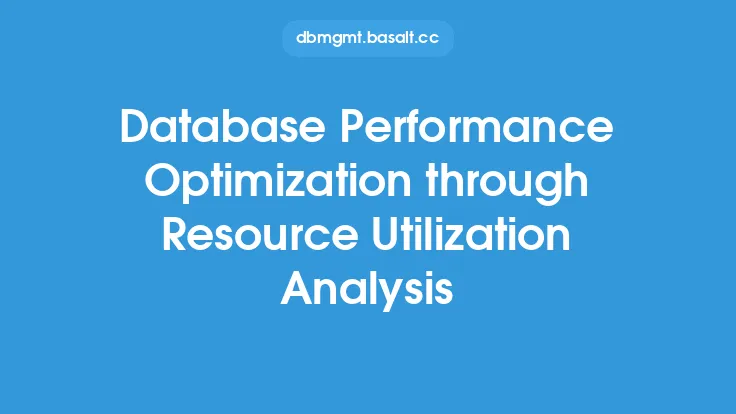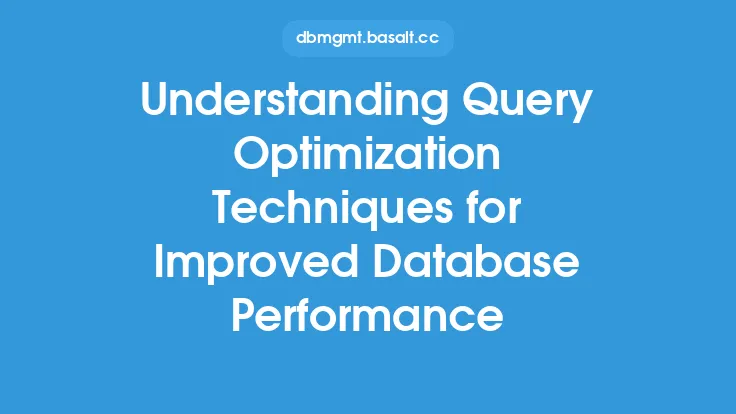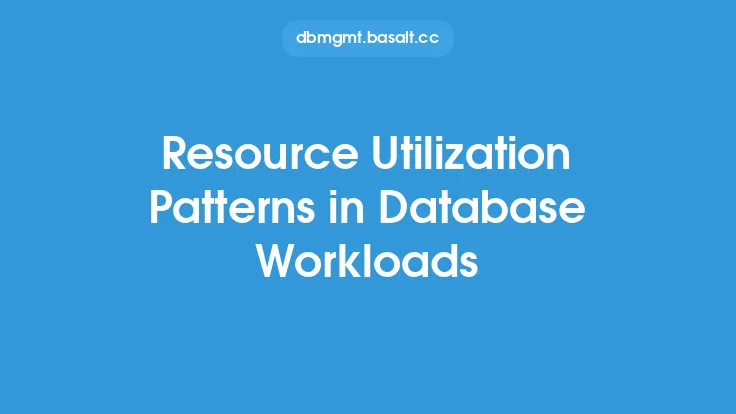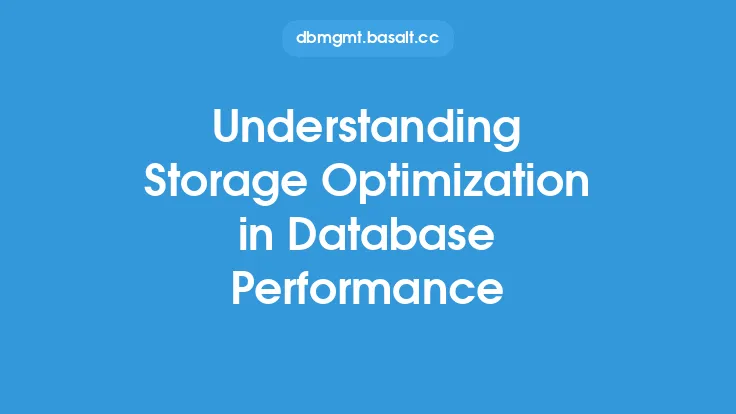Database performance optimization is a critical aspect of ensuring the efficient operation of database systems. One key factor that significantly influences database performance is resource utilization. Understanding how database resources are utilized is essential for identifying bottlenecks, optimizing system configuration, and improving overall database efficiency. In this article, we will delve into the concept of resource utilization in database performance optimization, exploring its importance, key resources, and factors that affect utilization.
Introduction to Resource Utilization
Resource utilization refers to the extent to which available resources are being used by a database system. These resources include CPU, memory, disk space, and network bandwidth. Effective resource utilization is crucial for achieving optimal database performance, as underutilization can lead to wasted resources, while overutilization can cause performance degradation. Database administrators must strike a balance between resource allocation and utilization to ensure that the database system operates efficiently.
Key Resources in Database Systems
Several key resources play a vital role in database performance. These include:
- CPU (Central Processing Unit): The CPU is responsible for executing database queries, performing calculations, and managing database operations. High CPU utilization can indicate intense database activity, which may require additional processing power or optimization of queries.
- Memory (RAM): Memory is used to cache frequently accessed data, reducing the need for disk I/O operations. Adequate memory allocation is essential for optimal database performance, as insufficient memory can lead to increased disk usage and slower query execution.
- Disk Space: Disk space is used to store database files, logs, and indexes. Insufficient disk space can lead to performance issues, while excessive disk usage can indicate inefficient data storage or indexing strategies.
- Network Bandwidth: Network bandwidth is critical for distributed database systems, where data is transferred between nodes. Inadequate network bandwidth can lead to performance bottlenecks, particularly in systems with high data transfer requirements.
Factors Affecting Resource Utilization
Several factors can affect resource utilization in database systems. These include:
- Database Design: A well-designed database with optimized schema, indexing, and normalization can significantly reduce resource utilization. Poor database design, on the other hand, can lead to increased resource usage and performance degradation.
- Query Optimization: Optimized queries can reduce CPU and disk usage, while poorly optimized queries can lead to increased resource utilization and slower performance.
- Data Volume and Growth: Increasing data volumes can lead to higher resource utilization, particularly if the database system is not designed to handle large amounts of data.
- Concurrent Connections: A high number of concurrent connections can increase resource utilization, particularly if the database system is not configured to handle multiple connections efficiently.
- System Configuration: System configuration, including parameter settings and resource allocation, can significantly impact resource utilization. Incorrect configuration can lead to underutilization or overutilization of resources.
Monitoring and Analyzing Resource Utilization
Monitoring and analyzing resource utilization is essential for identifying bottlenecks and optimizing database performance. Database administrators can use various tools and techniques to monitor resource utilization, including:
- System Monitoring Tools: System monitoring tools, such as CPU and memory monitors, can provide real-time information on resource utilization.
- Database Logging: Database logging can provide detailed information on database activity, including query execution times, disk usage, and network bandwidth utilization.
- Performance Metrics: Performance metrics, such as query execution times, throughput, and response times, can provide insights into resource utilization and database performance.
Optimizing Resource Utilization
Optimizing resource utilization is critical for achieving optimal database performance. Database administrators can use various techniques to optimize resource utilization, including:
- Query Optimization: Optimizing queries to reduce CPU and disk usage can significantly improve database performance.
- Indexing: Creating efficient indexes can reduce disk usage and improve query execution times.
- Caching: Implementing caching mechanisms can reduce disk usage and improve query execution times.
- Resource Allocation: Allocating resources efficiently, including CPU, memory, and disk space, can ensure optimal database performance.
- System Configuration: Configuring system parameters and resource allocation can significantly impact resource utilization and database performance.
Best Practices for Resource Utilization
Following best practices for resource utilization can help database administrators optimize database performance and ensure efficient resource utilization. These best practices include:
- Regular Monitoring: Regularly monitoring resource utilization and database performance can help identify bottlenecks and optimize system configuration.
- Optimized Database Design: Designing databases with optimized schema, indexing, and normalization can significantly reduce resource utilization.
- Efficient Query Optimization: Optimizing queries to reduce CPU and disk usage can improve database performance and reduce resource utilization.
- Adequate Resource Allocation: Allocating resources efficiently, including CPU, memory, and disk space, can ensure optimal database performance.
- Continuous Optimization: Continuously optimizing database performance and resource utilization can help ensure that the database system operates efficiently and effectively.





